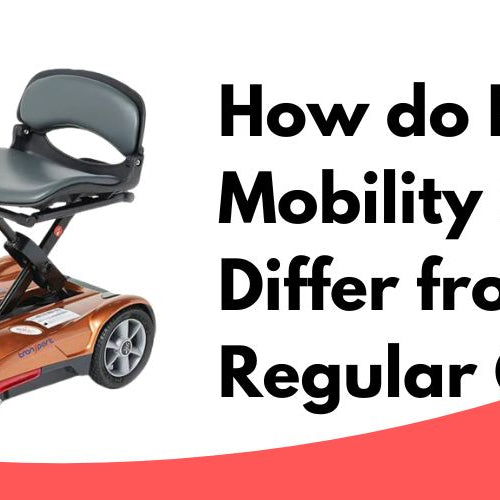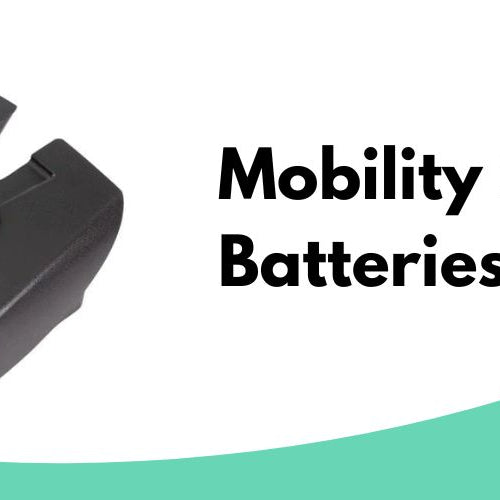As people age, maintaining balance and mobility can become increasingly challenging. Walkers have long been a solution for seniors to maintain independence, but the shift from traditional walkers to UPWalkers, also known as upright walkers, has been emerging in recent years. In this article, we will highlight five significant benefits that UPWalkers provide over their traditional counterparts, to help you determine if this improved mobility aid is the right choice for you or your loved one.
Traditional walkers often require users to hunch over, leading to poor posture and discomfort. UPWalkers, on the other hand, are specifically designed to allow users to maintain an upright position while walking. This ergonomic design not only promotes better posture but also reduces the likelihood of developing back and neck pain. The adjustable armrests provide additional support, ensuring that users can find the perfect fit to meet their specific needs for both comfort and stability.
UPWalkers also come with a variety of features that make them more versatile and user-friendly than traditional walkers. These include lockable handbrakes, which make it easier to navigate uneven surfaces or stop safely, and oversized wheels designed to handle both indoor and outdoor terrain with ease. Many models can also be easily folded for convenient storage and transportation. Combined with the health benefits and improved functionality, UPWalkers offer a more comfortable and convenient option for seniors in need of mobility assistance.
5 Benefits of an UPWalker
Improved Posture
The UPWalker is designed to encourage a natural, upright posture, unlike traditional walkers that often force users to hunch or bend forward. This ergonomic design helps to promote better spinal alignment and reduce strain on the neck, back, and shoulders. Users of the UPWalker can experience less discomfort and enjoy an improved sense of dignity as they maintain a more normal walking posture.
Reduced Pain and Discomfort
Many users report a reduction in pain and discomfort while using the UPWalker. The design diminishes stress on the wrist, back, and shoulders typically experienced with traditional walkers. The cushioned armrests and comfortable hand grips provide added support and alleviate pressure on the joints. As a result, people with mobility challenges can walk more comfortably and for longer durations.
Increased Stability and Safety
The UPWalker provides a higher level of stability and safety compared to traditional walkers. Its study frame and broad base help to prevent tipping and provide users with a more secure footing. The design also includes sit-to-stand handles that make it easier to transition from sitting to standing, further increasing stability and reducing the risk of falls or accidents.
Enhanced Mobility
With the UPWalker's unique design, users can experience better overall mobility. The device enables them to walk in a more natural, upright position, which can lead to greater freedom of movement and a more active lifestyle. Additionally, the UPWalker is equipped with large, sturdy wheels that can handle various terrains, making it suitable for both indoor use and outdoor activities.
Greater Convenience and Versatility
The UPWalker offers a variety of convenient features and accessories that can enhance users' experiences. The device is equipped with a simple armrest adjustment system, allowing users to achieve the perfect height in seconds. It also comes with a drink holder, seat backrest, and personal bag for added convenience. Moreover, the UPWalker is designed with an easy-folding and lightweight frame, making it simple to transport and store.
Comparing UPWalkers to Traditional Walkers
Design Differences
UPWalkers and traditional walkers differ significantly in terms of design. An UPWalker features a unique upright design that provides horizontal arm supports, allowing users to maintain a more natural, upright posture while using the device. On the other hand, traditional walkers generally have a lower, horizontal frame that requires users to lean forward while holding onto handles, leading to a hunched position.
The upright design of the UPWalker not only promotes better posture but also reduces strain on the user's wrists, shoulders, and back. Additionally, UPWalker often come with larger wheels, making it easier to navigate different terrains both indoor and outdoor.
Functionality Comparison
When it comes to functionality, the UPWalker has several advantages over traditional walkers:
-
Better posture: As mentioned earlier, the UPWalker's design encourages a more natural, upright posture, reducing the risk of developing or worsening existing back and neck problems.
-
Enhanced stability: The UPWalker has been awarded the ISO 11199-3:2005 Certification for both indoor and outdoor use due to its stringent tests for stability with horizontal arm supports. This certification indicates a higher level of safety and stability as compared to traditional walkers.
-
Increased mobility: The larger wheels of an UPWalker make it more suitable for various terrains and outdoor environments, whereas traditional walkers often struggle on uneven surfaces.
-
Greater comfort: The horizontal arm supports on an UPWalker alleviate pressure on the wrists, shoulders, and back, making it more comfortable for users over an extended period. Traditional walkers may cause additional strain and discomfort over time.
-
Customizable support: UPWalkers often come with adjustable features such as height, handle positioning, and additional accessories like seat cushions, allowing users to tailor the device to their needs and preferences.
While UPWalkers generally offer a higher degree of support, comfort, and functionality compared to traditional walkers, it's essential for potential users to consider their specific needs, mobility challenges, and budget when selecting the most suitable mobility aid.
How to Choose the Right UPWalker
Choosing the right UPWalker can greatly enhance one's mobility and overall quality of life. Below are some essential factors to consider when making your selection.
Sizing Considerations
One important aspect in choosing an UPWalker is its size. It's essential to select a device that's appropriate for the user's height, weight, and specific needs. For instance, some UPWalkers can support up to 300 pounds of weight and accommodate additional items in storage bags. Making sure the walker isn't too large or too small for your frame is crucial for comfort and effective use.
Adjustability and Customization
Opt for an UPWalker with adjustable height capabilities for both the seat and armrests. This feature adds convenience and ensures a proper fit for a variety of users. Additionally, consider if the UPWalker can be easily transformed into a 20-inch seat with a backrest and breathable mesh material. This transformation feature enhances usability and comfort.
Some noteworthy benefits of an UPWalker over a traditional walker are:
- Enhanced posture: UPWalkers promote a more upright walking posture compared to traditional walkers. This improvement results in reduced hunching and slouching, which can alleviate back pain and discomfort.
- Greater stability: An UPWalker's design provides better support and stability than a standard walker. This advantage leads to a decreased risk of falls and increased confidence in mobility.
- Improved comfort: Due to the adjustable armrests and customizable seating options, UPWalkers offer a more comfortable experience than traditional walkers.
- Increased independence: With greater stability and support, UPWalker users can better navigate various environments and enjoy a more active lifestyle.
- Storage capabilities: Many UPWalkers feature conveniently placed storage bags, making it easier to carry belongings without straining the back.
Maintenance and Durability
When selecting an UPWalker, consider its maintenance requirements and overall durability. A good-quality UPWalker should be constructed from sturdy materials capable of withstanding daily wear and tear. Additionally, the device should require minimal upkeep to ensure it remains functional and safe to use.
In summary, when choosing an UPWalker, bear in mind sizing, adjustability/customization options, and durability. These factors, along with an understanding of the device's benefits over a traditional walker, will aid you in making an informed decision that caters to your specific mobility needs.
Frequently Asked Questions
Cost Differences
UPWalkers and traditional walkers both serve the purpose of providing support and balance for those with mobility issues. However, there are some key differences in the costs associated with each. In general, UPWalkers tend to be more expensive than traditional walkers. This is due to their more advanced design, increased stability, and added features like armrests and a seat. Despite the higher upfront cost, the added benefits and functionality of an UPWalker might ultimately make it a more cost-effective option for some users.
Insurance Coverage
When it comes to insurance coverage, it's essential to check with your provider to see which types of mobility aids are covered. Many insurance companies cover traditional walkers, but coverage for an UPWalker may vary depending on the specific plan and any pre-existing conditions. It's crucial to consult with your insurance provider to determine the extent of coverage for an UPWalker.
Availability and Options
Both UPWalkers and traditional walkers are available through various retailers, medical supply stores, and online platforms. While traditional walkers come in numerous styles and designs, the options for UPWalkers may be more limited. Nevertheless, there are still different UPWalker models available to accommodate varying user needs, preferences, and budgets.
An UPWalker generally offers more features and customization options than a traditional walker. For instance, many UPWalkers come with adjustable forearm supports, ergonomic handgrips, and a seat that allows for comfortable resting. On the other hand, traditional walkers typically provide more basic support, without as many customizable options.
In summary, choosing between an UPWalker and a traditional walker ultimately depends on factors such as cost, insurance coverage, availability, and personal preferences. By considering these aspects, individuals can make an informed decision about the best mobility aid to suit their needs.
Conclusion
In summary, the UPWalker presents several advantages over traditional walkers, which contribute to a better user experience and overall satisfaction. These benefits can be summarized in the following key points:



-
Enhanced Mobility: Thanks to their design, UPWalkers allow users to move more freely and navigate different terrains with relative ease. This makes activities such as shopping, visiting parks or attending social events more accessible and enjoyable.

-
Extra Support: UPWalkers can be customized to meet individual needs, including height and armrest adjustments. This added support system makes it easier for users to maintain balance and move safely, particularly amongst seniors or those with limited mobility.

In conclusion, the UPWalker provides numerous advantages over traditional walkers, making it an excellent option for individuals seeking to maintain their independence and stay active. By offering features such as improved posture, increased stability, the ability to rest, enhanced mobility, and extra support, the UPWalker proves to be a valuable tool for users looking to improve their quality of life.











Leave a comment